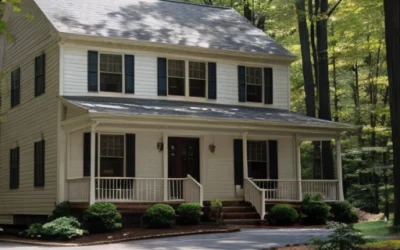Loan Modifications are Back – What that Could Mean for Your Mortgage
Facing financial difficulties can lead to significant stress, especially when it jeopardizes your ability to maintain your mortgage payments. Whether you’re currently grappling with financial hardship, struggling to meet your monthly mortgage obligations, or concerned about the aftermath of forbearance periods ending, it’s crucial to understand that you’re not without options. The path to relief, however, isn’t a one-size-fits-all solution; it’s tailored to individual circumstances, potentially leading you toward loan modification or refinancing as viable strategies for maintaining your home and financial health.
Understanding Loan Modification
Loan modification offers a ray of hope for homeowners seeking to avoid default and foreclosure during challenging times. This process involves altering the terms of your existing mortgage, aiming to reduce your monthly payments to a more manageable level. Karen Condor, a finance and insurance expert with Loans.org, highlights that this doesn’t replace your mortgage or lender but restructures your loan to ease the burden of payments through methods such as reducing your interest rate or extending the repayment term.
How Loan Modification Functions
The principal of your loan remains unchanged with a loan modification. Instead, adjustments are made to lower interest rates or extend your home loan’s terms, potentially reducing your monthly payments and the total interest paid over time. Modifications might also convert adjustable-rate mortgages to fixed-rate loans or incorporate late fees into your principal, providing a more affordable monthly payment.
|
Washington mortgage programs may be able to save you hundreds every month. A new 2024 mortgage may be able to give relief to homeowners. Unfortunately, most Americans will not receive their mortgage benefits because they are not aware of some of these programs. You do not need to pay anything to check how much you could get.
Check Washington Programs Here |
Loan Modification vs. Refinance
Refinancing often emerges as the initial step for homeowners seeking lower mortgage payments. It involves replacing your existing loan with a new one, typically featuring a lower interest rate or a longer repayment term, and can offer a permanent reduction in payments without adversely affecting your credit score. However, financial hardships can sometimes make qualifying for a new loan challenging, leading some to consider loan modification as an alternative.
When to Consider Loan Modification
Loan modification becomes a consideration when refinancing isn’t viable, often due to financial hardships that affect one’s ability to qualify for a new loan. It’s a solution tailored for those who have exhausted other mortgage relief options and find themselves unable to refinance because of diminished income, credit score issues, or other debt obligations.
Loan Modification vs. Forbearance
Another relief strategy, forbearance, temporarily suspends mortgage payments, allowing homeowners time to recover financially. Unlike forbearance, loan modification offers a permanent solution by altering your loan’s terms or rate. For some, a combination of forbearance followed by loan modification provides a comprehensive plan for overcoming financial setbacks and maintaining homeownership.
Eligibility for Loan Modification
Qualifying for a loan modification typically requires having missed at least three mortgage payments and being in default. However, those on the brink of default due to imminent financial hardships might also be eligible. It’s important to demonstrate the likelihood of recovering from these setbacks to be considered for modification.
Initiating a Loan Modification Request
To embark on the loan modification process, start by contacting your loan servicer directly. Be prepared to submit a hardship letter alongside financial documentation to illustrate your situation comprehensively. Yet, securing a modification isn’t guaranteed, as lenders are under no obligation to alter your loan terms.
Exploring Mortgage Loan Modification Programs
Your options vary based on your loan type and servicer’s policies. Notably, Fannie Mae and Freddie Mac offer Flex Modification programs aimed at reducing payments, while government-backed loans like FHA, VA, and USDA loans have specific modification plans to accommodate borrowers facing delinquency.
Is Loan Modification Right for You?
While loan modification can offer a lifeline, allowing you to stay in your home and potentially avoid foreclosure, it’s crucial to consider the long-term implications, including potential increases in your loan’s principal amount due to capitalized missed payments.
Alternatives and Next Steps
Beyond loan modification, alternatives like refinancing, forbearance, or even bankruptcy might provide the relief needed, depending on your situation. Before making a decision, consult with your servicer, a financial advisor, or a housing counselor to explore all available avenues for maintaining your home and financial stability.
In times of financial uncertainty, being proactive and informed about your mortgage relief options can pave the way toward finding a solution that aligns with your needs and circumstances, ensuring you make informed decisions about your home and future.






